Mari Jacobson’s eyes fill with tears when she talks about the wind.
Persimmons for Palestine: The Berkeley Pop-Up Turning a Japanese Tradition Into Activism
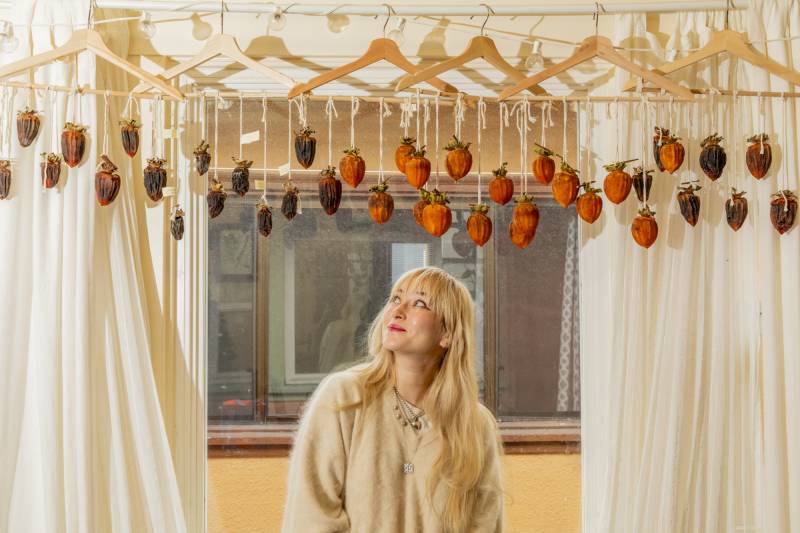
Decades before Jacobson was born, her great-grandmother used to perform miracles with the cold dry winds that flooded the valley in her mountainous prefecture in central Japan. They were her accomplice as she strung peeled persimmons from the eaves of her green-tiled roof. Together, she and the wind bloomed the natural sugars of the persimmons from the inside out until the fruits had preserved themselves in their own sweetness.
“It’s really nice to think that someone else in my lineage was sitting there, peeling persimmons,” Jacobson says, some 60 years later. “I think it takes a very specific kind of patience to engage in this practice.”
On a damp December morning in Berkeley, the 31-year-old is carrying on the centuries-old technique for drying persimmons, something she first began doing last winter. But now, she’s doing it for a purpose much larger than herself.
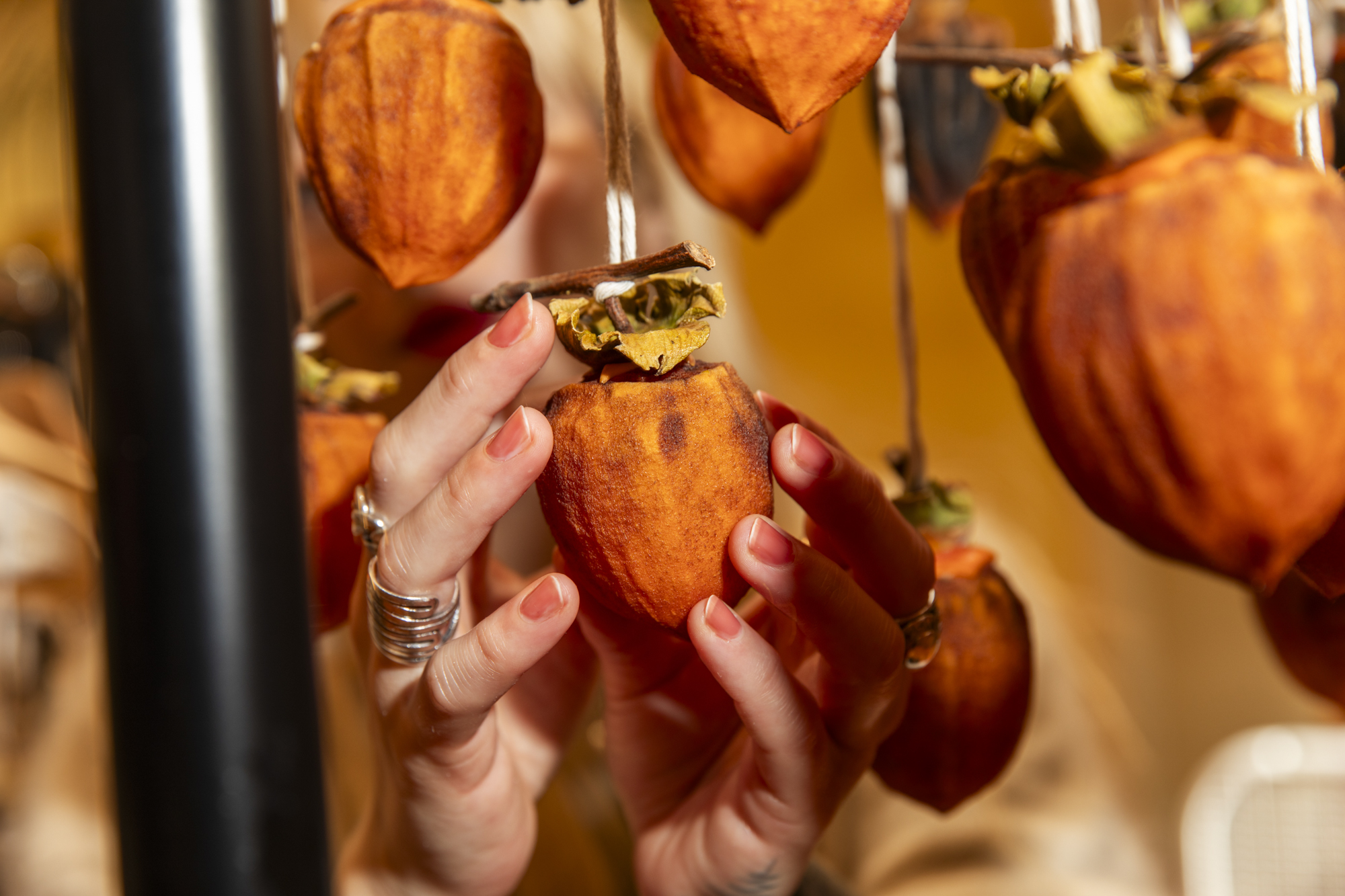
In early November, Jacobson announced through her pop-up Setsunai Snack that she would be selling dried persimmons for $10 to $20 each, and sending 100% of the proceeds to the Middle East Children’s Alliance, a nonprofit that serves young Palestinians and Syrian refugees. She received $1,050 in orders over the course of 12 hours, for a total of 60 persimmons that would need to travel as far as Pennsylvania, she says.
“I’ve been deeply affected by all the news of the genocide in Palestine as a human, but also as someone who grew up in the Jewish community,” says Jacobson, whose dad is Jewish and whose mom is Japanese. “I wanted to mobilize my very negative feelings towards a small action and the creation of something that I consider very beautiful.”
But after the rain set in, Jacobson worried over the persimmons, strung up by their T-shaped stems from clothes hangers in her kitchen. Weeks after she’d spiraled the peels off the first batch with a knife — leaving the persimmons disrobed and vulnerable — a few dropped off their stems in moldy defeat and were stolen away by Jacobson’s cats.
Anyone who’s tried hoshigaki will tell you it’s a delicate and complicated process. It’s nothing like dumping citrus peels into a pot of bubbling sugar, or sun-drying grapes — unless you’re individually massaging each grape for over a month.
Hachiya persimmons need certain conditions to become sweet: frequent massages, lots of time and a cold, dry place to do their thing.
“It feels like taking care of a living creature,” Jacobson says.
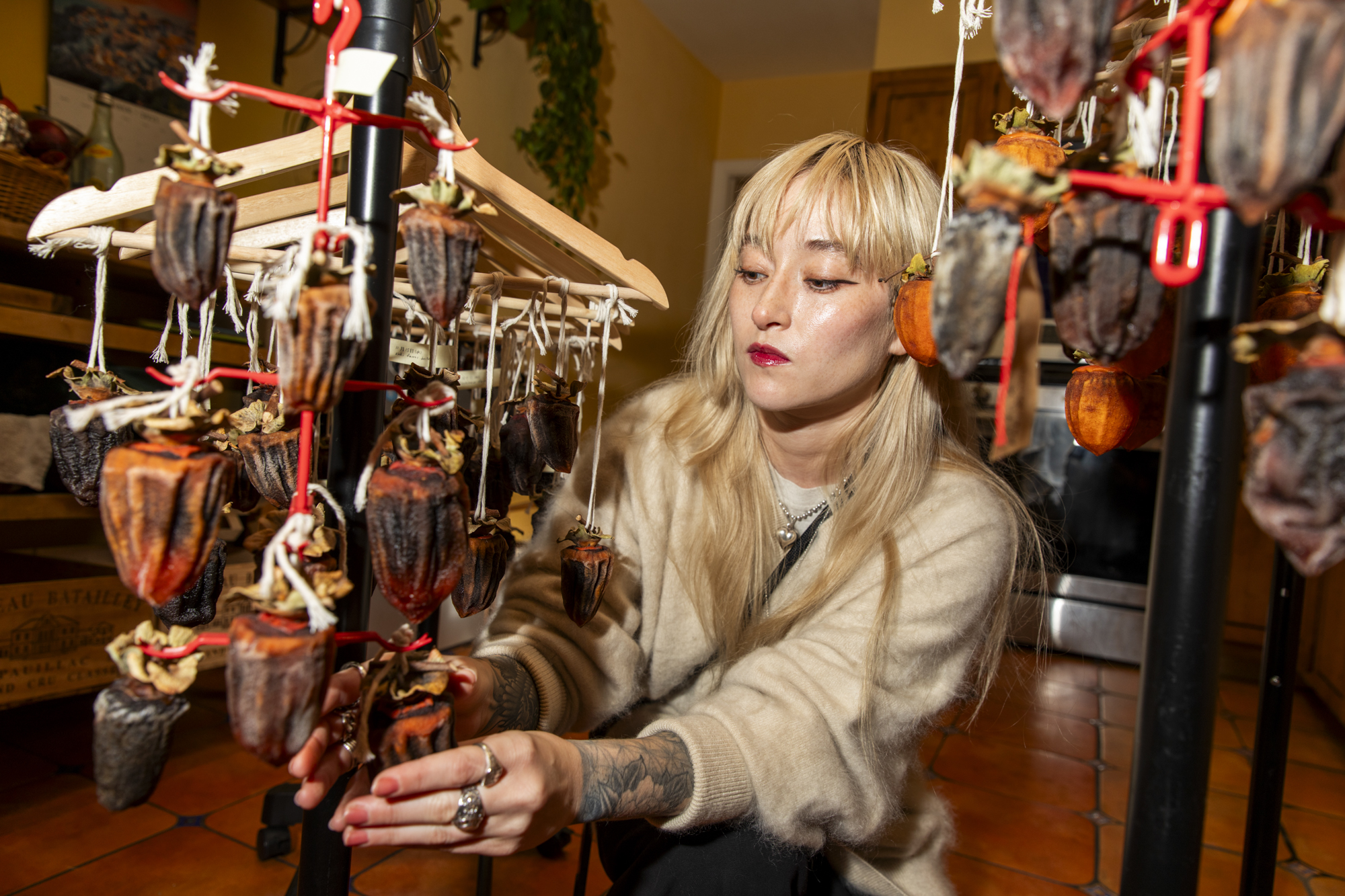
Persimmons are a fall and winter fruit, and the Bay Area is generally a nurturing place for young persimmons as they come of age on the branch. But with a winter climate that’s been flip-flopping between weirdly warm days and rainy ones, this season hasn’t provided what hachiya persimmons need to transcend to caramelly excellence.
“Battling the rain, I had to buy this net enclosure for the persimmons, and then I had to move them inside,” Jacobson says. Instead of dry gusts rushing through an ancient valley, she had a large box fan plugged into her kitchen wall, angled towards clothing racks dangling with fruit.
But seven weeks out from when she peeled the very first batch, the surviving fruit had miraculously surrendered its moisture and crinkled inward, just as they were supposed to, around their now crystallized hearts.
Jacobson’s constant attention — and weeks of worry — had paid off, even if she’d lost a few in the process.
“They’re all I think about,” she says with a laugh.
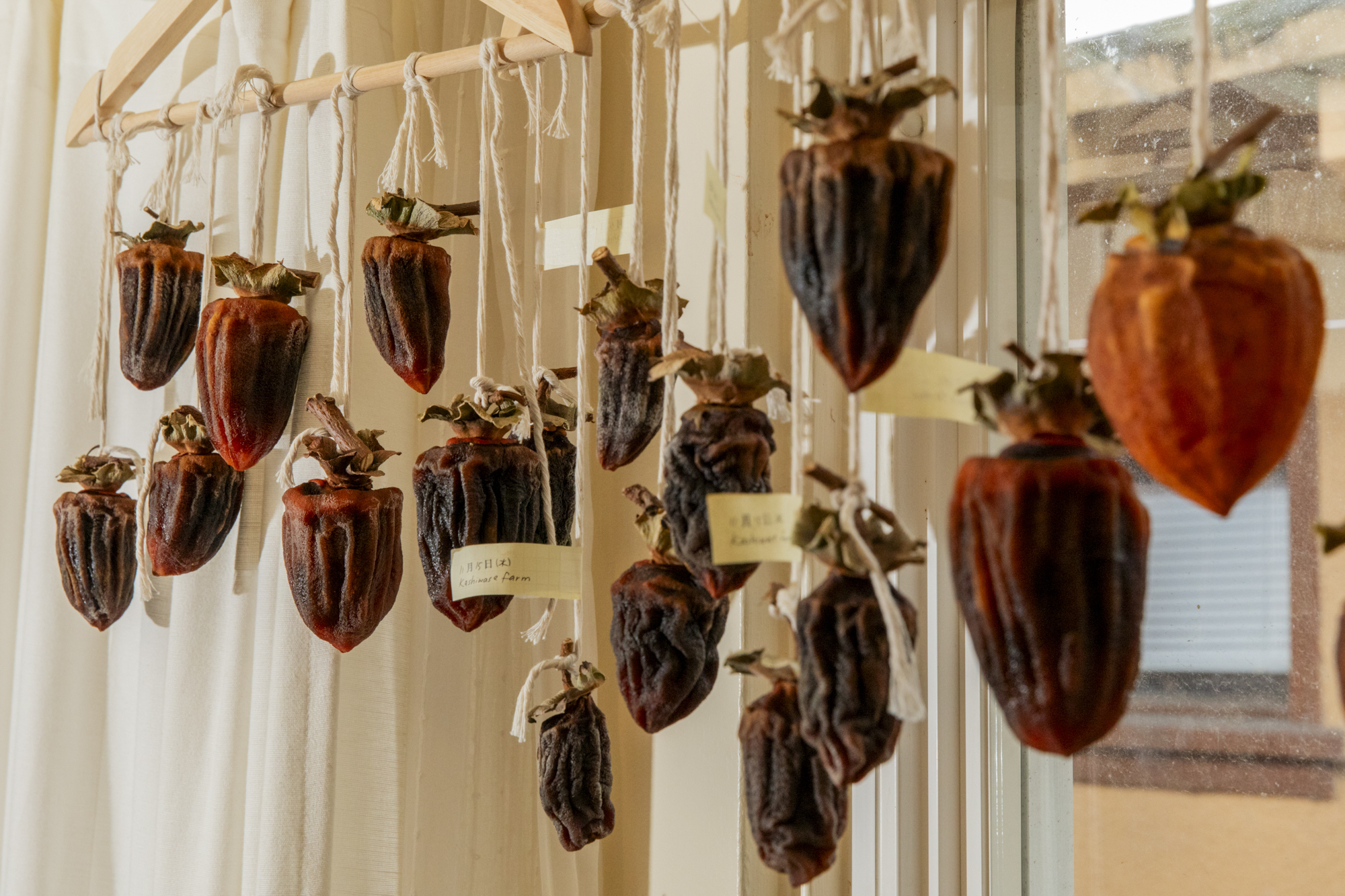
On her kitchen countertop, Jacobson slices one of last year’s dried persimmons, a shriveled nugget of its former self, and offers a taste. A persimmon’s equivalent of powdered sugar dusts the surface of the sliver, and tastes just as sweet but more nuanced than the stuff you’d find in boxes at the store. The innermost layer is its own world of brown sugary goodness, and only gets deeper in flavor with each chew.
It’s sublime — and even better with some tea, bread and a soft cheese, Jacobson says.
Food and freedom
As Jacobson attends to each fruit this December morning, she handles them according to where each one is on their journey. Some get a firm squeeze, others the delicate pressure of hugging a great-grandparent.
“The fruit takes on a life of its own,” she says, softly pinching a persimmon between her thumb and forefinger.
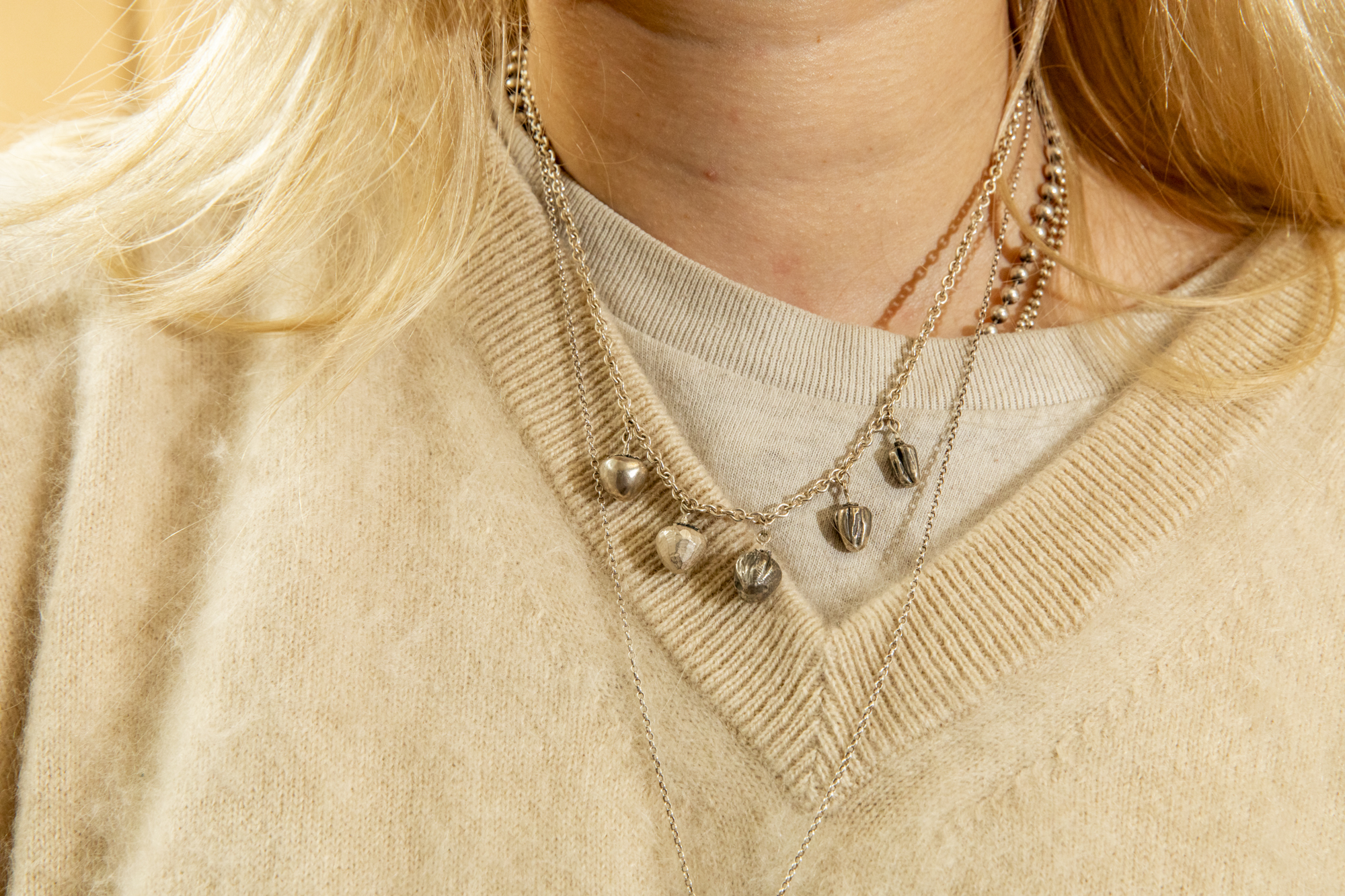
Lately, Jacobson has been thinking about how food — and lack thereof — can be a tool of oppression. According to the NGO Human Rights Watch, the Israeli government is using starvation as a method of warfare, blocking the delivery of food, fuel and water to Palestinian civilians — a war crime, under international humanitarian law.
The connection between food and culture is precious, she says. It isn’t lost on her that hoshigaki brought Jacobson and her great-grandmother into harmony with their ecosystem; she sees the Israeli government’s actions as an attempt to sever that bond between Palestinians and their land.
“It’s very heavy to think about food sovereignty right now,” she said. “To think about how much Palestine is struggling with starvation right now and how violating it can be to not have access to important cultural foods that provide vibrancy to your life.”
Soon, Jacobson will be packaging the candied fruits to be shipped out all over the U.S. She hopes that people who encounter her effort will use their own gifts to express their solidarity with Palestinians.
“There’s always going to be some way that you can take a localized action to support a cause,” she said. “Even if it’s geographically very far.”

